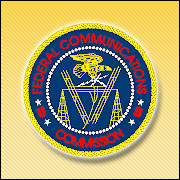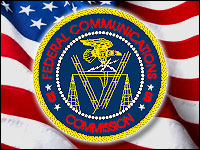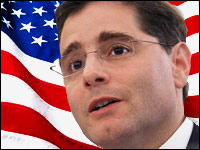
Following the the Federal Communications Commission’s (FCC) release of a detailed plan for giving Americans better access to broadband Internet connections, the blueprint is drawing reactions across a wide range of observers and interested parties.
“This may be one of the most important projects the government has undertaken since the national freeway system was constructed,” Rob Enderle, principal analyst at the Enderle Group, told the E-Commerce Times. “It could make the difference between whether we are a has-been country at the end of this decade, or are still on top,” he added.
“The nationwide broadband plan is long overdue, and it’s pointing us in the right direction,” said Chris Guttman-McCabe, vice president of regulatory affairs at CTIA — The Wireless Association, said.
The broadband plan’s impact extends beyond the commercial to the political. “The idea of providing everybody faster access won’t just jump-start the industry and create more dynamism, but it’s also part of the jockeying between Europe and North America to position themselves as the most technologically advanced country in the world,” explained Godfrey Chua, a research manager at IDC.
The Six Pillars of National Broadband
The FCC listed six goals for the national broadband plan.
The first is to give at least 100 million households in the United States affordable access to actual download speeds of at least 100 Mbps and actual upload speeds of at least 50 Mbps.
Second is to ensure the U.S. leads the world in mobile innovation, with the fastest and most extensive wireless networks. Third is to offer every American affordable access to robust broadband service and the means and skills to subscribe to it if they want to.
Fourth is to give every community affordable access to broadband service at a minimum 1Gbps speed to anchor institutions such as schools, hospitals and government buildings.
Fifth is to ensure every first responder — which means the police, rescue services and the like — access to a nationwide public safety wireless network. The sixth goal is to ensure that every American can use broadband to track and manage real-time energy consumption.
Why Faster Broadband’s a Good Thing
Why would people need 100 Mbps access, anyway? Most consumers do quite well with DSL, whose average speed ranges from 384 Kbps to 20 Mbps.
“If you’re going to put in a system that will take a decade or so to roll out, you need to design in enough headroom so that it can handle future loads, and not just present loads,” Enderle explained. “Also, we know networks bottleneck under heavy loads, so over-engineering is justified to ensure that they can deliver the needed bandwidth when the project is completed, and that they don’t immediately become obsolete.”
Giving every community will get 1 Gbps access to anchor hospitals, schools and government buildings may sound like a tall order — hasn’t the FCC heard of PDFs and compressed files? And shouldn’t private hospitals foot the bill for their own high-speed bandwidth?
The situation’s not quite so simple, Enderle said. “Medical records are available electronically now in many areas, and we’re starting down a path where the medical specialist may be remote from the patient in order to keep down medical costs,” he pointed out. “To do that effectively will require substantial additional bandwidth.”
When the cost of services is cut, government-funded healthcare will be more affordable both for the government and for patients, Enderle said.
Making Things Work
The national broadband plan includes provisions to beef up wireless communications, but in order for that to work, more spectrum is needed. “On the wireless front, the gating factor is always the availability of spectrum,” IDC’s Chua explained.
“If the government is committed to enabling more widespread connectivity, it has to make more spectrum available; make sure there’s a well-thought-out process; and accelerate the process of getting the spectrum out to those companies that want to build wireless services,” Chua told the E-Commerce Times.
“The combination of efforts to get smarter devices into the market, and the growth of wireless broadband data traffic means we’re reaching the point where there needs to be more spectrum,” Claudia Jones, a spokesperson for AT&T, told the E-Commerce Times. “We recognize and applaud the FCC for looking at this issue.”
The FCC has appealed to broadcasters to give up some of their broadcast spectrum, through either leasing it out or selling it. It needs 300 MHz.
Spectrum’s Siren Song
Apparently the FCC could succeed in getting that spectrum. “A significant portion of the 300 MHz will come from broadcasters,” CTIA’s Guttman-McCabe told the E-Commerce Times. Nationwide, 294 MHz of spectrum has been set aside for broadcasters, but much of it is unused.
Further, broadcasters use high broadcasting towers and put out high-powered signals, which affect spectrum in nearby markets. For example, some of the channels used in D.C. can’t be used by broadcasters in nearby Baltimore, Md., because they interfere with broadcasts in that range, Guttman-McCabe pointed out. That ripple effect is also felt in Delaware and Philadelphia.
“Part of what the FCC is suggesting is to get broadcasters to repack their broadcasts so they don’t have a negative impact on nearby markets,” Guttman-McCabe said. This could involve switching from high-power, high tower services to a cellular model with lower towers and less powerful signals.
Other areas the FCC is looking into are reallocating some government spectrum and spectrum in mobile satellite and other services. “There’s an additional 50 Hz of spectrum already in the pipeline that’s been identified for reallocation,” Guttman-McCabe said.
Combined Technologies
Wireless access is one of the many communications technologies that must all work together in order for the national broadband plan to succeed.
“It’s not going to be one technology that will make connectivity ubiquitous,” IDC’s Chua pointed out. “It’s going to be WiMax working with copper-based technologies, fiber optics, LTE and WiFi. In some instances, some of these technologies will compete head-to-head with each other, but we also have to consider them as being complementary to each other.” LTE, or Long Term Evolution, is the last step toward 4G wireless capabilities.
Somehow, the FCC needs to get communications players to agree to create what might best be thought of as a quilt of different communications technologies.
“You can’t concentrate the cost of every connection on just one technology because it’s going to be hard to deliver cost-effectively,” Chua explained. “The idea isn’t to have LTE replace your fiber connection, for example, but for them to complement each other.”
























































Social Media
See all Social Media